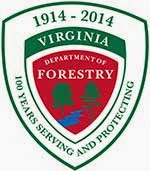 Bettina Ring has been appointed State Forester by Gov. Terry McAuliffe. Ring most recently served as Senior Vice President of Family Forests at the American Forest Foundation where she was responsible for overseeing the American Tree Farm System®, the largest and oldest sustainable woodland program in America, supporting more than 80,000 family forest owners collectively managing 27 million acres of certified woodlands.
Bettina Ring has been appointed State Forester by Gov. Terry McAuliffe. Ring most recently served as Senior Vice President of Family Forests at the American Forest Foundation where she was responsible for overseeing the American Tree Farm System®, the largest and oldest sustainable woodland program in America, supporting more than 80,000 family forest owners collectively managing 27 million acres of certified woodlands.
Ms. Ring has a long history in the conservation and forestry sectors, having spent 14 years at the Virginia Department of Forestry (VDOF), departing the agency in 2001 as Deputy State Forester. In her role, Ms. Ring was responsible for operations, and helped to develop and implement a new mission, vision and strategic plan for the department. In the years following her VDOF service, Ms. Ring held various leadership positions within nonprofit organizations focusing on natural resources management and conservation, including the Colorado Coalition of Land Trusts, The Wilderness Land Trust and the Bay Area Open Space Council. Ring holds a bachelor’s degree in forestry and wildlife from Virginia Tech and a master’s degree in business administration from James Madison University.
